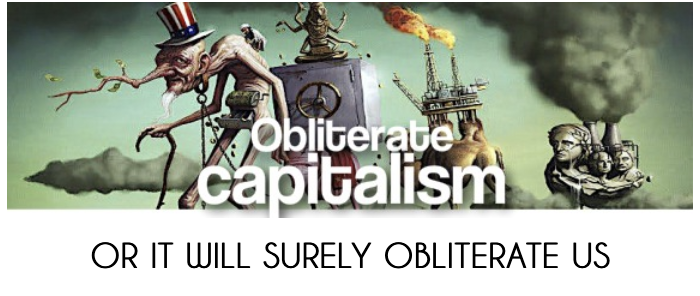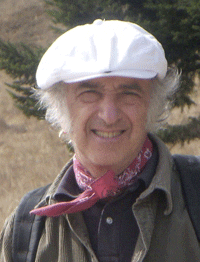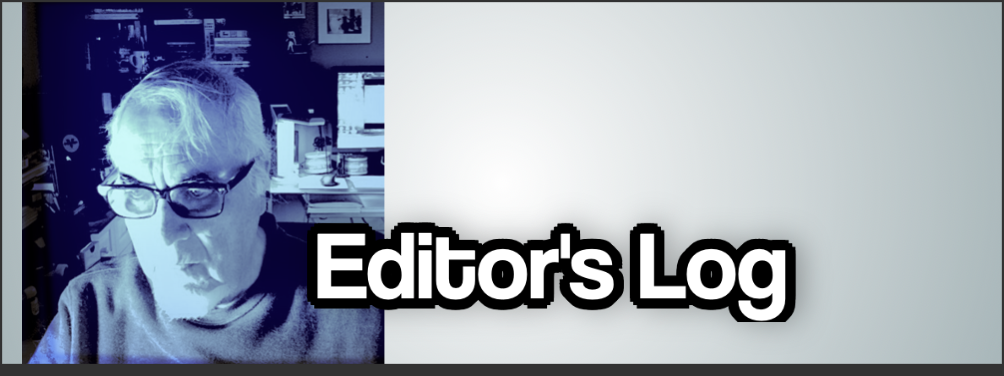History of the emotions
“Emotions” are one of those words that everyone thinks understand until you press them with questions. Broadly speaking, Western philosophers have not thought well of emotions. It was not until the time of the Romantics at the end of the 18th century that the tide turned in favor of the emotions. Here is a history of how the leading lights of the West thought of emotions. For most of Western history:
- Emotions were thought of as coming from supernatural forces outside the psyche. It was only in the second half of the 19th century that emotions were thought about as physiological
- Emotions had no separate categorization of its own. It was rolled up into temperament and passions.
Plato was as distrustful of emotions as he was of pleasure. Emotions were part of appetite and a lower form of humanity. Rationality and mathematics were believed to be true. Aristotle, as he often did, struck a balance and said that reason and emotion went together. The Stoics, including Seneca, understood the passions to be dangerous and the cause of imbalances. Reason should put passions in their place. St. Augustine distinguished emotions of human frailty from emotions of God. Reason was separated from emotions since emotions could not be trusted. For Hobbes, the passions are bodily sensations and are the primary sources of action, which prompt both war and peace. Passions could go in two directions. One way was towards an object which was appetite and the other was away from object, which was aversion. Respite from passions make rational decisions possible and the basis for a social contract. Descartes, as most of us know, separated the mind from the body and believed emotion had no place in the mind, which was rational and mathematical.
The status of the emotions began to improve with Spinoza who wrote that both the mind and the emotions were part of nature. Locke added that emotions could be positive as well as negative and added the empathy people have with each other. Hume warned against the rising tide of passion, saying that passions controlled reason. Hume did not think that reason drove emotions. Rather, reason was just a calculator for a way out of predicaments that the passions had created. Rousseau championed natural feelings as more reliable than reason and despised “factious or sham feelings produced by civilization”.
How well do you know what emotions are?
To demonstrate how people’s understanding of emotions can be more confusing than you might suspect, try responding to the following statements below. Except for the eighth bullet, try to decide if each statement is mostly true, conflicted or mostly false. Don’t take more than a minute to answer each one, as my point for this article is to examine your spontaneous answers to these statements. After you’ve marked the bullets true or false, give a reason or two which justify each answer. Then answer bullet eight with a paragraph. The first part of this article is designed to address your answers before discussing other topics. Here are the statements:
- Feelings and emotions are the same thing.
- Emotions are irrational and are the opposite of thoughts.
- Emotions are biological and out of our conscious control.
- Emotions happen first and thoughts follow in order to explain them.
- Negative emotions such as hostility and venting (screaming and throwing things) get those emotions out of your system so they don’t build up.
- Changing your interpretations of thoughts about events that happen to you can change your emotions.
- A two-year old cannot feel angry.
- What kind of conditions might exist in which you wouldn’t know how you feel?
- In general, women are more emotional than men.
- Emotional ranges are universal regardless of one’s social class.
- Non-verbal body language, like gestures and postures, are truer expressions of emotions than what people tell you about their emotions.
- Regardless of the type of society, if a heterosexual woman finds her husband in bed with another women it is natural to feel jealous.
A Cognitive Theory of the Emotions
Are feelings and emotions the same thing?
Usually people use the terms “feelings” and “emotions” interchangeably. I think this is a loss of a great opportunity to differentiate physiological states of arousal (feelings) from cognitive interpretation of events (emotions). While most feelings are biological and out of our control, (fight-flight, pleasure-pain; frustration-contentment), our emotions are under our control. But what do I say, as a counselor, when a member of my Men Overcoming Violence support group says to me “but my anger is out of my control. What do you mean I have control of them?”. Feelings like dry mouth, sweaty palms, headache simply start the process. Which emotion results from these bodily conditions depends on how the physiological state is interpreted. One interpretation is a panic attack. Another is anxiety while still another is anticipating the happy unknown of a wedding ceremony.
Emotional reactions from thick to thin
In order to have interpretations, the person has to give meaning, and in order to do that the person has to think. “Wait a minute” the participant in Men Overcoming Violence, says “when I get angry it happens very fast, I don’t think about which emotion to have, I just have them. How do you explain that?”. The problem is many of us think of thinking as thick – weighing the pros and cons of buying a pair of pants or trying to understand what is causing a leak in the pipe. We have less practice imagining thinking that is thin and happening quickly. How do we account for differences in the speed in which we think?
A child is not given a universal set of emotions which, like buttons, the child pushes on and off. She has physiological states of arousal and the child is slowly taught how to translate that state of arousal into emotions like hurt, confusion, or sadness. The time it takes to have an emotion is mediated by the set of interpretations the parent socializes in the child. As the child reacts to situations, the situations become more familiar, so both the thinking process and the emotional go faster. Soon the emotion is unconscious and automatic. It becomes so habitual that it seems “natural, that is, biological. No emotion is biological. Feelings are biological, emotions are ontogenetic (part of individual development), social, cultural and historical, as we shall see.
Emotional reactions from thin to thick
In the last section I said there that as people are presented with situations that are familiar and predictable their emotional reaction speeds up and eventually becomes unconscious. But what are the conditions under which your emotional reactions will slow down? This can happen when a person is put in an increasingly unusual situation. For example, suppose I broke up with someone I loved after five years. We had differences over wanting children, where we wanted to live and how much money we expected each other to make. So we break up. It is a relatively small town and we are at the point where the last thing either of us wants to do is run into each other. But errands are errands, so I head for downtown. In the distance about three blocks away I think I see her. I duck inside a storefront and watch as the figure moves towards me. How do I feel? Sad, disappointed, angry but relieved. I am frozen in place. Then I see another figure is joining her and they hold hands. Now I am filled with new emotions. Outrage, as I decide not enough time has passed by to justify this. Was she seeing this guy while we were still together? What the fuck?? It gets worse. About a block away I see her partner is a woman. Now all the gaskets are blown. Fortunately, the store front was a clothing store that I can enter to possibly avoid running into them. Fortunately for me she and her girlfriend don’t come in. I flee the scene for home. Do I know how I feel? There is only so much complexity that can be integrated. I friend calls later in the afternoon to see how I am doing. He asks, “how are you feeling?”. My true answer is that I don’t know how I feel. It will probably take me a few days to answer a question like this coherently.
Are emotions irrational and the opposite of thoughts?
Emotions are not irrational and the opposites of thoughts. There are rational and irrational thoughts, not rational or irrational emotions. Irrational thoughts are things like, “my boyfriend is cheating on me because he is talking to a female neighbor for 30 minutes. I am jealous”. The thought is irrational because the woman is jumping to specific conclusions without much evidence. Being jealous is only irrational because the thought is irrational. If the same woman claims that her husband is flirting with the neighbor and might be sleeping with her because she has many experiences of her husband having had casual sex is rational. Here, in this situation, the emotion of jealousy is rational. All emotions follow thought. Emotions are rational or irrational just as thoughts are. Feelings are biological and prerational but only emotions can be irrational or rational
Are emotions biological and out of our control?
Emotions are neither biological nor out of our control. Emotions are ontogenetic, social cultural and historical. Having a particular emotional reaction may be hard to change but that does not mean they are out of our control. As an Italian American man, I am socialized to express anger rather than hurt, sadness or confusion first. Can that be changed? Yes, but it requires a great deal of psychological work. Many men in the Men Overcoming Violence program learned how to do that, but it took them 40 weeks of meeting once a week for two hours. On the wall we had a large list of emotions on a 5×10 foot piece of butcher paper. At the top were seven kinds of emotion. But underneath each emotion there were seven other emotions going from strongest to weakest intensity. Every time a man in the program said he was angry, we would insist that he include at least 2-3 other emotions so he could become aware of the emotional variety of his emotional states that he was unaware of up to that point.
Thoughts precede and create emotions
As is probably obvious by now emotions don’t come first and thoughts follow. First comes interpretation of what events mean and then the emotion follows. The order is:
- Interpretation of what the situation means – dangerous/safe; structured/loose;
- Feelings sweaty palms, dry-mouth, heart racing;
- Emotion – fear, anger, disappointment.
Does the hydraulic theory of emotions work?
Allowing yourself to vent—yell, scream and throw things does not make you have less emotion. What it does is help you form a habit of escalating to the point where it gets easier and easier. “Getting it of your system” is part of an old way of looking at emotions called the “cathartic theory of the emotions” that goes all the way back to Aristotle. It has been called the “hydraulic” theory because it pictures emotions as rising up like water in a bathtub which will overflow if it is not drained. Freud had this theory and so did humanistic psychologists like Fritz Perls during the early 1970s. Reichian therapists would give people tennis rackets and have them flail the couch of the therapist, hoping to get their anger out of their system. It was not until the 1980s when cognitive psychologists argued that emotions don’t work that way (see Carole Tavris, Anger, the Misunderstood Emotion).
Emotions emerge over the course of ontogenesis moving from simple to complex
Is anger present from birth or is it the product of a developmental process that only arises at a certain age level? Some theorists of emotion claim that there are universal emotions such as surprise, disgust, love, hurt, sadness. My point here isn’t to claim what the right batch is. Rather it is to say whatever the right batch is, it takes time for them to emerge. So to the question can a two-year old express anger, my answer is no. Let me give an example. If you are watching a two-year-old child play with a toy and you get up and put a barrier in front of the toy and you watch the child try to figure out how to get around the barrier to the toy the child may be frustrated, but they are not angry at you. In order to be angry the child has to perceive that there are a certain social roles and rules that are normal. Anger comes over the violation of these rules. If the child was six years old and you again placed a barrier between them and their toy, chances are good they would be spending more time challenging why you put the barrier up than they would trying to overcome the barrier. Why? Because as the child’s parent, it is highly unusual for you to behave in such a sadistic way. There are complex emotions like jealousy, envy and revenge which require the mastery of rules and roles before they make sense.
How Emotions are Socialized
Are women more emotional than men?
At least in Yankeedom, it is common to say that women are more emotional than men. This is really not the case at all. Socially, women and men are given a range of emotions that it is safe to express and another set that is more or less forbidden.
If we start out with straight women and straight men we can say, women are taught to express a wider set of emotions such as sadness, hurt, fear, confusion, humiliation and love. Men are socialized to be angry, brave and courageous. What is interesting is that if a woman crosses the line and expresses forbidden emotions, she is threatened by being called gay or a lesbian. We all know that when a woman is assertive at work she is called a bitch. On the other hand, can you imagine how a male attendant at a gas station would feel if after finally agreeing with his wife that they were lost came into the store and said:” I feel embarrassed, humiliated and confused because I can’t figure out how to get to such-and-such a place”? The guy might not give him the correct directions right away. He may first say “Get hold of yourself, man”.
There are at least two ways to think about having an emotion. The first is emotional impression and the second is emotional expression. An emotional impression is when an emotion is registered internally. An emotional expression is whether you decide to express the emotion to someone else. Often, women may express emotions more. But that does not mean women are more emotional than men.
Expression of emotions and social class
It is not true that all classes in capitalist societies have the same range of expression of emotions. In the first place, it matters what kind of religion the social class is committed to. If we consider the differences between men and women and we examine Catholic working-class women and men we will find they will express a greater range of emotions than the Protestants will. The protestant working class (at least the white working class) tend to be shut down emotionally. Working-class men and women generally have a hard life and it makes sense they will have thicker skins.
Middle-class men and women have better jobs that requires less armoring. They will be more open emotionally than the working class. This is amplified by how committed middle-class people are to therapy. Out-to-lunch, class-oblivious, humanistic psychology proclaims that the more open the person, the healthier they are. They fail to understand that if you live in rough neighborhoods, attend rough schools and take orders from a boss all day long, it pays to have a thick skin.
Upper-middle-class men generally are the happiest in their work. Women in upper-middle-class positions at work have to be more careful, since they are in danger of being called a bitch for asserting their authority. They also have to be careful about being labelled as too emotional at the slightest turn.
The upper classes are generally old money conservatives. Both men and women tend to repress emotions and they generally feel that the very expression of emotion is bad taste. They carry on an aristocratic tradition which prides itself in never breaking down, whether in love or war.
Happiness and social class
Socialists would be very happy with the results of research about which social classes are happy and which aren’t and why. It seems intuitive to say that the upper classes are happier than the working class because they have an easier life. But research shows that this isn’t quite the case. What we know for sure is that money does bring happiness when money delivers the working class into a middle-class position. However, there is no necessary correlation that money buys happiness as one moves from the middle class to the upper class. It is not predictable that upper-class people will claim to be happier than those who are middle-class. All this means is that when money provides the foundation for a good life, people respond well. But beyond the middle class there is no correlation between money and happiness. To say money can’t buy happiness is not true. Happiness can increase as we ascend from poor to the middle class. A formula for a good economic social policy is that if you want happier people, try to make all workers middle class.
Differences between classes in becoming civilized and becoming disciplined
As we will see shortly when we discuss the history of emotions, the process of becoming civilized brought with it a whole different range of social and psychological emotions. But for now we want to ask, does the process of becoming civilized apply to all social classes from the 17th through the 19th centuries? In my book Forging Promethean Psychology I argue that the working class and the poor in absolutist states or nation-states never became civilized, but they did become disciplined.
How was becoming disciplined different from becoming civilized? The first difference had to do with the population in question. Becoming civilized was the psychogenetic socialization process of the middle and upper classes. Being disciplined mostly applied to the working class and the poor. The second difference was in the types of influences used. The process of becoming civilized involved softer influences such as rhetoric, charisma, symbolic power, and legitimacy. Discipline, at least initially, involved hard influences such as physical force, the threat of force (coercion), economic deprivation, politics, and later, legitimation.
The third difference was the direction of the class forces operating. Becoming civilized, as Norbert Elias writes was a competitive process for status among classes who were roughly equal – aristocrats, merchants, and intellectuals. Becoming disciplined initially involved top-down orders. Poor or working-class people had to obey the authorities or face consequences. Discipline came from the top: Calvinist and Lutheran theologians to their parishioners; from military authorities to their soldiers; and from the state to its subjects.
Following Elias, becoming civilized in the courts of Europe involved a new set of emotions for aristocrats such as shame, embarrassment, superiority and envy. For the working class under disciple, they had another set of emotions; fear, suspicion, paranoia and guilt. It is easy to think classes in other societies had the same set of emotions, but this is not true. Elias says that the situation in 16th and 17th century Europe was unique.
Cross-Cultural Emotions: How They vary from society to society
Collectivism vs Individualism
In his book Cultural Psychology, Steven J. Heine reports that broadly speaking individualists of industrial capitalist societies are more likely to express emotions than collectivists and they are certainly more likely to express negative emotions. This is not hard to understand. People in collectivist societies are interdependent upon each other and consider most as extended kin at work and in their villages. They cannot afford blow-ups. On the other hand, because the relationships between individuals in industrial capitalist societies are short-term and appear voluntary (following social-contract theory), they are more likely to tolerate a falling out.
Another common distinction is between cultures of honor (herding societies) and cultures that are not (farming societies). As has been pointed out in the book Cultures of Honor herders are far more suspectable to insult because: a) their wealth is mobile rather than stable; b) their population is sparse; and c) they have no protection from the state in terms of land disputes. Farmers are more likely to tolerate insult because their wealth in land is stable, they can count on the state for intervention and the land is densely populated. They are less likely to settle disputes with duels or shoot-outs. The differences between southerners and northerners in the United States follows.
Finally, Ruth Benedict characterized the difference between shame cultures and guilt cultures. Shame is embarrassment at letting the group down. Guilt has little to do with groups. Guilt is remorse over a volition of a law, or a holy book. Puritans show a great deal of guilt. She also made a distinction between Dionysian cultures which are expressive and Apollonian cultures which were more reserved.
Analogical messages: gestures, postures
Most people well understand that it is necessary to do emotional work on the job and at home. Emotional work means a) showing emotions you do not have and; b) hiding the emotion you do have. This is especially true in customer-service work. However, people also imagine that their analogical communication (gestures, postures) is somehow less deceptive and imagine they are a more reliable gage than verbal expression of emotions. But cross-cultural research shows this is not the case. For example, Yankees may think that the A-Okay sign is universally recognized when among Southern Europeans, it is a crude gesture. In our Men Overcoming Violence group, a Yankee man innocently propped up his feet on a stool in front of an Iraqi man sitting across the way. He soon found out the showing the sole of one’s foot to someone from Iraq is the greatest insult. If there are gestures and postures that are universal, they are few and far between. They may be harder to hide than the verbal expressions but their origins lie deep in the local context of the culture which vary from region to region.
Cross-cultural nature of jealousy
The following is paraphrased from the textbook Invitation to Psychology by Carole Wade and Carol Tavris. A young wife leaves her house one morning to draw water from the local well, as her husband watches from the porch. On her way back from the well, a male stranger stops her and asks for some water. She gives him a cupful and then invites him home for dinner. He accepts. The husband, wife and guest have a pleasant meal together. In a gesture of hospitality, the husband invites the guest to spend the night with his wife. The guest accepts. In the morning the husband leaves early to bring home breakfast. When he returns, be finds his wife again in bed with the visitor. At what point in this story will the husband feel angry? The answer depends on the culture.
- A North American husband would feel very angry at a wife who had an extramarital affair.
- A North American wife would feel very angry at being offered to a guest as if she were a lamb chop.
- But a Pawnee husband of the 19th century would be enraged by any man who dared to ask his wife for water.
- An Ammassalik Inuit husband finds it perfectly honorable to offer his wife to a stranger, but only once. He would be angry to find his wife and guest having a second encounter.
- A century ago, a Toda husband in India would not feel angry at all because Todas allow both husband and wife to take lovers. However, both spouses would feel angry if one of them had a sneaky affair, without announcing it publicly.
In most cultures people feel angry in response to insult and the violation of social rules. But they often disagree about what an insult is or what the correct rule should be. Here we have four different cultures lined up on the political spectrum in their attitudes towards hospitality and sexuality.
The most extreme right wing is the Pawnee Indian who draws the line at talk at the well. In the center right is a Yankee husband who is outraged at his wife having a martial affair. But on the liberal side of the spectrum we have the Inuit who draws the line not at having an affair, but at having sex twice. The Toda, the most radical has no problem extramarital sex. The problem is if it is done in an underhanded manner.
History of the Emotions
Broadly speaking, it used to be that emotions were experienced as being invasion from the sacred world given to us by the goddesses and gods. It was only at the beginning of the 18th century that emotions were thought of as originating from some part of the mind or the body. After 1860 emotions were seen as cultural, universal, inclusive of all species, biological, physiological and hard-wired.
What does it mean that emotions have a history? Does it mean that new emotions emerge in different historical periods? To say this is to challenge universalis ideas of emotions being static or possibly circulating in different historical periods. In my book Lucifer’s Labyrinth I follow Elias’ description of how differences from the Middle Ages to Early Modern Europe produced new sets of emotional reactions.
Emotions in the Middle Ages
As Elias says, people in the Middle Ages lived a life that was intense, brutal and short. They lived life to the fullest with the time they had. Their psychological life alternated between sensory saturation and religious mortification about what they had done. Middle Age people were more violent and could tolerate more pain. As Elias said, they live their life between the super-ego and the id. The ego was less developed.
The warrior class in the Middle Ages could be characterized as courageous, impetuous, wild, cruel and living in the present. But when these warriors were forced into the courts by the king and the merchants, they had to adapt themselves to court life. Above all, they needed to control themselves. Now their characteristics included being prudent, restrained, self-contained, timely, refined, more humane and more gossipy. Their every mood required foresight for the future, hindsight into the past (people they may have offended) and insight and self-reflection to make sure their behavior was not offensive. So within a century, the emotional life of one class significantly changed.
Emotional life in the Baroque and the 18th century
There are also major differences in the emotions between the Baroque 17th century aristocrats and the 18thcentury merchants during the Enlightenment. The aristocrats of the 17th century had superiority complexes, were preoccupied with “keeping up with the Jones” and cultivated a cool nonchalant attitude. On the other hand, some 18th century merchants strove openly to be happy, and were motivated by their quest for serenity. Their emotions were controlled by reason, not so much by what was expected of them. The emotional life between the aristocrats and merchants differed in many other areas such as attitude toward the senses; attitude towards pain; attitude towards animals; bodily conduct; sleeping patterns and attitude towards dying.
From honor and glory to avarice and ambition: warriors vs merchants
As we’ve said, the values of aristocrats in Europe were honor and glory. But for the merchants in the 18thcentury these values would not do. As Albert Hirschman traces a movement from glory and honor to “interests” in his book Reason and Society in the Middle Ages, Alexander Murray tells the story of how these values were undermined by two new values: avarice and ambition. Both these motivations were despised by all classes in the Middle Ages. But with the rise of merchants there was a slow process by which avarice and ambition were changed from vices to virtues, which supported merchant capitalism
Emotional life of Romantics: late 18th to mid 19th century
Lastly, in the 18th century with the rise of romanticism, early romantics had a new attitude toward the emotions which differed drastically from the Enlighteners. Lionel Trigger in his book Sincerity, points out that with romanticism came new emotions: the importance of being sincere and the importance of being authentic. Being sincere was the exact opposite to the aristocratic of haughtiness and masquerading. It meant saying what you meant and meaning what you said. Being authentic came out of the romantic notion that everyone had a true self as opposed to the roles both aristocrats and merchants had to play. Being authentic meant showing people your true self. Sincerity and authenticity were hugely important to humanistic psychology in the 1960s and 1970s.
Summing Up: Evolution to an Emotion
We are now finally in a position to describe the evolution to an emotion. The first step, or point zero, is an external event that triggers the emotion. Let’s say you work as a cook in a restaurant and your ex shows up for dinner with her new boyfriend.
- Physiological state of arousal:
- Physiological – sweaty palms, racing heart, dry mouth
- Feelings – confusion, frustration, pain, discomfort
- Internalized socio-cultural, class and historical forces
- Type of society – industrial capitalist
- Social class – all working class
- Cross-cultural – Mexican American; Italian
- Gender – heterosexual – man – woman
- Point in history – 21st century crumbling Yankee empire
- Cognitive appraisal
- Automatic thoughts; cognitive interpretations; explanatory styles
- Assumptions – all this from the cognitive psychology of Albert Ellis and Aaron Beck
- Analogical messages
- Gestures, posture, clothing
- Situational constraints
- You are working and you can’t leave
- Display rules and emotional work
- What feelings do you have to show that you don’t have?
- What feelings do you have that you can’t show?
- Emotional impression
- Hurt, anger, fear, jealousy, disappointment, relief
- Emotional expression
- Optional
- Act like you don’t care
Under normal circumstances which are routine, all eight of these steps could be processed in less than ten seconds because of years of practice. But because of the unusualness of this particular circumstance, our poor cook may take days to process what the situation means and what array of emotions he has.
As we have seen, the cognitive theory of the emotions has revolutionized the theory of emotions by arguing that emotions come from thoughts. But cognitive psychology implies that the individual makes up their own mind about which emotions they have. In the evolution to an emotion steps, the second step is entirely missing. A communist theory of the emotions would have social, cultural, class and historical mediators in place.
The hardest step for people in capitalist society to understand about this evolution is the second step. How could internalized socio-cultural, historical and class forces be inside of people rather than outside? Wouldn’t these forces come later, at the end?
The inclusion of step two attacks the idea that emotions are private, inside people and under their control. A communist theory of the emotions says that emotions are not private. They are products of a particular type of society, a particular social class, a particular kind of culture existing in a certain point in history. All these forces exist prior to the time you were born and they are socialized into you by your caretakers mostly unconsciously, especially in the first five years. The initial internalized socio-cultural, class and historical conditions are inside you whether you like it or not. That is our fate.
Later, as we mature, we become more active in dialectically reciprocating with these forces so that our class status might change. We might go to live in a different country (culture) or go to live in a socialist society. We might work as economic advisors to contribute to the world historical economy shifting Eastward in the 21st century. Whereas fate are the conditions that we are given when we are born, destiny is what we make of those conditions. However, even if you are active on all these fronts, step two is the infrastructural plumbing of all emotions and its creates and sustains all the steps that follow. The content of the infrastructural plumbing may change, but the presence of a plumbing infrastructure will not.
What Capitalism Can Do to Our Emotions
Capitalist psychology splits the individual from his social, cultural, historical and class identity. Then it takes the stripped-down, isolated, alienated individual as human nature as its point of departure. Most every psychological problem is rooted in the chaotic and contradictory interactions of the four systems as they interact.
Alienation Under Capitalism
Alienation is the inversion of subject and object, creation and creator. It is a reversal of ends and means so that the means acquire a life if their own.
Members of capitalist society are alienated in:
- the products of their labor;
- the process of producing the products;
- the other people they are producing with;
- the power settings in which the product is distributed;
- the biophysical environment; and
- their self-identity
The products of their labor: commodity fetishism: hoarding, manic consumption
Marx talked about how under capitalism commodities acquire a life of their own, and become disengaged from the situation which produced them. Commodities, rather than becoming a means to an end for living, become an end in itself. Erich Fromm defined a particular kind of pathology which he called the hoarding mentality and the marketing pathology in which people are obsessed with the accumulation of commodities. The emotional life of a consumer is anxious and destabilized because their identity is centered around the acquisition of new commodities, whether they need them or not. Most capitalist psychologists treat accumulation of commodities and capitalist mania for accumulation as not worth identifying as a pathology as it’s not even in the diagnostic manual.
The process of producing the products: insecurity, anxiety, exhaustion
Under capitalism, the workday has lengthened from 40 to at least 50 hours of work in the last 50 years. There is less security about having a job and the average worker is more likely to have two jobs with no benefits. For workers a job is just something to put up with. Life begins when an individual has leisure time. Work under capitalism still possesses a religious root as a way to repent from original sin. This adds extra distress for workers during a recession or a depression when workers cannot find a job but blame themselves for not having a good “work ethic.”
Other people they are producing with: competitive anxiety anti-group mentalityAlmost a hundred years ago neo-Freudian Karen Horney claimed that it was competition between workers and between workers and other social classes that produced anxiety. As I mentioned in my article What is Social Psychology Part II, that groups under capitalism are treated as:
- no more than the sum of individuals;
- less than the sum of individuals;
- an entity that has a super-personally separate life from individuals.
To give you an example of the third framework, when people join a group at work, they often dissolve into it. They reify the group. They make the group a thing, above and beyond anything they can control. When an individual withdraws from the group, the group is renounced as a resource, as the individual believes their problems are so precious that no one could possibly understand them.
When the individual tolerates the members of a group, the individual renounces the capacity of the member being tolerated to change. The tolerating member does not consider that other members might be restless also, and they are not alone in putting up with members who are hard to manage. When individuals rebel against the group, they assume that other group members are conservative, never change or are stuck in their ways. If the individual tries to dominate the group, the dominating individual renounces their ability to get what they want through the collective creativity of the group. What withdrawing, toleration, rebelling or dominating have in common is that they are zero-sum game, with winners and losers. The best example of a group that is treated as less than the sum of individuals, is in the Lord of the Flies novel. A group being less than the sum of individuals exists in the hyper-conservative imagination of Gustave Le Bon in his books about crowds, or in mass media’s depiction of mass behavior during natural disasters where crowds develop a hive mentality.
The power-setting in which the product is distributed: apathy, myopia
Unions in the United States gave up a long time ago providing a vision for workers in terms of having a say in the decision making on the job. This leads to apathy. In addition, the specialization of labor discourages understanding what is going on in the entire production process. People do their job over and over and know nor care what is going on in other parts of the production process. “That’s none of my business”.
Alienation from nature: physical deterioration shortening life-span
This form of alienation under capitalism has reached a currant volatile form in the areas of pollution extreme weather. John Bellamy Foster has called this a “metabolic rift” between humanity and nature. Air pollution worsened breathing for people with lung problems and added new physical problems. Extreme weather has made both winter and summer conditions hazardous almost everywhere in Yankeedom. The lack of state planning over Covid has either killed millions of people or given them Long-Covid. The United States life span has declined 2.7 years since Covid began. The US is the worst at managing Covid, having the highest number of infections and deaths. Environmental psychologists have long known that getting out into nature reduces stress and has long-term benefits. But thanks to capitalism, communing with a nature which is unpolluted is getting harder and harder to find.
Alienation from self: the illusion of free will under capitalism – depression
Capitalist psychology assumes people are fundamentally selfish, as if we individuals are like Hobbes’ atoms, greedy, insensitive, grasping and mindlessly crashing into each other. Whether it is Freud’s ego or the behavioral motivation of pain or pleasure, individuals’ primary motivation is self-interest.
Under capitalism individuals have supposed “free will”, meaning they may more or less freely choose their situations. Religious institutions, educational expectations, economic and political propaganda, legitimation techniques, mystification and collusion in the end have no bearing on what happens. In spite of everything, free will wins over the type of society we are raised in, our social class, our culture or the historical period in which we live. With these unrealistic expectations about freedom, the individual is likely to internalize the real-life constraints and blame themselves for their less than idyllic life.
For a communist psychology, all these forms of socio-political control affect free will. While none of these processes by themselves or even all together determine a person’s free will, the options people choose to exercise are significantly constrained.
Capitalists eternalize capitalist relations
Capitalists eternalize alien relations under capitalism and treat them as if they were always there. They project how people learn, think, emote and remember under capitalism into other historical periods. For example, they present narcissism, attention-deficit disorders or manic-depression as present in tribal or state civilizations just as much as they are under capitalism.
Emotions under Communism
Everything that follows is based on the real experience of workers in worker cooperatives, behavior in natural disasters and workers’ experiences in revolutionary situations. These emotional states represent communists at their very bestrather than all the time. Under communism people are seen as primarily collectively creative. This is demonstrated in practice when workers are given the opportunity to operate cooperatives, create workers’ councils in revolutionary situations or even how they behave during natural disasters. Selfishness is a product of capitalism and not the primary way human beings operate. Consuming commodities are a means to an end. There is no hoarding or manic consumption in communism since the primary identity of a worker is fulfilled on the job because they love their work.
Workers are not anxious or insecure about work because there is more than enough work for everyone. The number of hours of work per day will shrunk because technology, no longer controlled by capitalist, is available to do mechanized part of the work, leaving people more time for the creative parts of the job.
Social unconscious: recalling the great moments in revolutionary situations
For a communist psychology, what is unconscious, at least for the working class is a “social” unconscious. It is the repressed memory of the human past, dead labor, that causes this individual to have “social amnesia” and not care about their own history. However, when the collective-creative memory is revived, out pours the wisdom that has accumulated from revolutionary situations: the heroic stance of the Paris Commune; the heroism of Russian factory councils and the workers’ self-management experiments in Spain from 1936-1939. To make this social unconscious conscious is to make the working class shapers of history rather than just being a product of it.
Pro-group basis of communist psychology
In all these examples the group attitude under capitalism is a whole never more than the sum of its parts. The goal of communist psychology is to cultivate a “social” individual who gradually comes to see the activity of building and sustaining groups as the key to emotional health. Even though in socialist psychology, the group as a whole is more than the sum of its parts, the group is still the creation of concrete individuals. The group has no mystical identity floating above individuals. While there is no group without individuals, through the collective creativity of members, the group acquires a synergy whose products are more than what any individual can do by themselves. A communist psychology creates these win-win situations through cooperation.
A socialist psychological group challenges people who withdraw or dissolve into the group by asking what the group can do to give then what they want. The group confronts those who tolerate others by asking them why they are putting up with other members – what would need to happen for things to be different. To those who rebel the group asks “what are you rebelling against and how could we change things to make the group more attractive to you?”. To those who try to dominate the group, socialist group therapy does not moralize against dominators. We simply say that you are losing out on the collective creativity of others by trying to subjugate them.
Our job involves exposing the unconscious commonalities between people that lie beneath our individual differences. It means making a long-term commitment based on the belief that the commonalities between most working-class and middle-class people far outweigh our differences.
The idea is that if you learn to build the collective power of a one group, you can then go out into the world and change it by your newfound capacity to change groups wherever we go, now and into the future. Learning how to change groups through the collective creative capacity of the group moves us from being products of history to being co-producers of it. A rich, co-creative group life is the key to emotional well-being under communism.
Conclusion
Under capitalism we have an emotional life with elements that include hoarding, manic consumption, narcissism, short-attention span, insecurity, anxiety, exhaustion, apathy, myopia, unnecessary physical deterioration, a shortened lifespan and depression. Under communism people are relaxed, serene, enthusiastic, creative, and happy and that goes with the research on happiness described earlier in this article.
 Gary Olson is Professor Emeritus of Political Science, Moravian College, Bethlehem, PA. His email: garyleeolson416@gmail.com
Gary Olson is Professor Emeritus of Political Science, Moravian College, Bethlehem, PA. His email: garyleeolson416@gmail.com

















